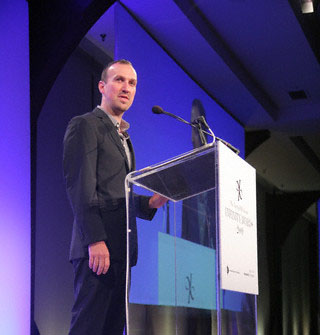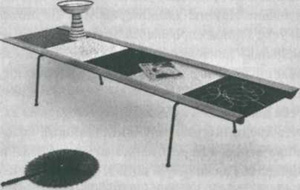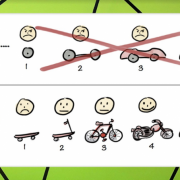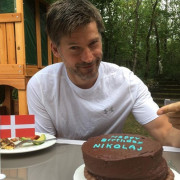Фуллер тори, эдвин
Содержание:
- Treatment Advocacy Center
- Education and early career[edit]
- Stanley Medical Research Institute[edit]
- Биография
- Библиография[править | править код]
- Early life
- Творчество
- Биография
- Bibliography
- Bibliography[edit]
- Bibliography[edit]
- National Alliance on Mental Illness
- Post war career
- Критика
- Treatment Advocacy Center[edit]
- Education and early career
Treatment Advocacy Center
Torrey is a founder of the Treatment Advocacy Center, a national organization that supports outpatient commitment for certain people with mental illness who, in his view of their treatment history and present circumstances, are judged unlikely to survive safely in the community without supervision. TAC has been credited by New York State Attorney General Eliot Spitzer and others with helping pass Kendra’s Law in the state. Kendra’s Law allows court-ordered involuntary treatment of people diagnosed with schizophrenia or other severe mental illness who have a history of not following psychiatric advice, i.e., individuals who are, «as a result of his or her mental illness, unlikely to voluntarily participate in the recommended treatment pursuant to the treatment plan.» Previously, only inpatient programs were available to submit a person to involuntary treatment. TAC’s efforts to pass Kendra’s Law led to similar successful passage of Laura’s Law in California, and similar laws in Florida and elsewhere. Torrey has testified numerous times in front of Congress.
Education and early career[edit]
Torrey earned his bachelor’s degree from Princeton University, and his M.D. from the McGill University Faculty of Medicine. Torrey also earned a master’s degree in anthropology from Stanford University, and was trained in psychiatry at Stanford University School of Medicine. At McGill and later at Stanford, he was exposed to a biological approach and recalls that one of his first-year instructors at McGill was Heinz Lehmann, the first clinician in North America to use the first antipsychotic, chlorpromazine. The medical school was housed next door to the Montreal Neurological Institute, a premier neuroscience center.
Torrey then practiced general medicine in Ethiopia for two years as a Peace Corps physician and later on he practiced in the South Bronx. From 1970 to 1975, he was a special administrative assistant to the National Institute of Mental Health director. He then worked for a year in Alaska in the Indian Health Service. He then became a ward physician at St. Elizabeths psychiatric hospital in Washington, D.C. for nine years, where he reportedly worked with the most challenging patients and aimed to avoid the use of seclusion or restraints on the acute admission units. He also volunteered at Washington, D.C. homeless clinics.
Stanley Medical Research Institute[edit]
Torrey is the founder and Executive Director of the Stanley Medical Research Institute (SMRI), a large, private provider of research on schizophrenia and bipolar disorder in the U.S. SMRI also maintains a collection of postmortem brain tissue from individuals with schizophrenia, bipolar disorder, and major depression and from unaffected controls, which are made available to researchers without charge.
After reading Torrey’s book Surviving Schizophrenia, Theodore Stanley, a businessman who had made a fortune in direct-mail marketing and whose son had been diagnosed in the late 1980s with bipolar disorder, contacted Torrey and he and his wife provided the funds for the new institute.
As of 2004 the Stanley Institute had 30 employees and funded half of all U.S. research on bipolar disorder and about a quarter of all schizophrenia research. In 2003 the institute’s rapidly growing research budget exceeded $40 million, 74 percent of which was given out to other researchers through grants. It reports that 75% of its expenditure goes towards the development of new treatments.
The Stanley Medical Institute in Bethesda, Maryland has collected in excess of 600 brains. In ARCH GEN PSYCHIATRY/VOL 61, NOV 2004, in a report called, «Brain Anatomy in Adults With Velocardiofacial Syndrome With and Without Schizophrenia», SMRI published results of a Structural Magnetic Resonance Imaging Study showing difference in brain structure of people with and without schizophrenia.
The SMRI has been sued for allegedly taking brains for use in research without proper consent. One lawsuit was settled out of court.
As of 2008 SMRI was also supporting the Stanley Center for Psychiatric Research at the Broad Institute, which plans to scan the entire genome for variants that predispose to schizophrenia and bipolar disorder, and screen hundreds of thousands of compounds against new molecular targets prior to clinical testing. The center was co-founded by Pamela Sklar, who published the first statistically meaningful gene identifications in schizophrenia and has demonstrated that schizophrenia is likely caused by many rare genetic variants.
SMRI reports that it has a close relationship with and is the supporting organization for the Treatment Advocacy Center (TAC).
Биография
Родился в Биг-Рэпидс, штат Мичиган. В 1889 он был в составе класса военно-морской академии США в Аннаполисе. После двухлетней службы в звании военно-морского кадета (согласно установленным требованиям) он 1 июля 1891 вступил в корпус морской пехоты в звании второго лейтенанта. Он и шесть его одноклассников посещали курсы для новоиспечённых офицеров морской пехоты в Школе применения, которая была прототипом нынешней Базовой школы.
26 октября 1892 вступил в брак с Кэтрин Хитон Оффли. У них было двое детей.
8 октября 1899 года капитан Фуллер участвовал в битве при Новалете на Филиппинах и был отмечен за храброе, мужественное и достойное похвалы поведение в ходе битвы за Тяньцзинь (Китай) 13 июля 1900 года.
В 1904—1906 он служил на военно-морской базе в Гонолулу, Гавайи. В июне-июле 1908 он служил в экспедиционных силах на Панаме, а с августа 1906 по январь 1910 командовал батальоном морской пехоты в Кэмп-Эллиот, зона Панамского канала. В марте-июне 1911 он командовал третьим полком морской пехоты в Кэмп-майер, залив Гуантанамо, Куба.
В 1911-15 годах занимал различные командные посты в США, также в этот период окончил курс полевых офицеров в школе армейской службы в Форт-Ливенуорте, штат Канзас и курс в армейском военном колледже, г. Вашингтон. После службы офицером сил морской пехоты флота с января 1915 по июнь 1916 подполковник Фуллер поступил в военно-морской колледж в г. Ньюпорт, штат Род-айленд, который с успехом окончил.
В августе 1918 Фуллер принял командование над второй бригадой морской пехоты в Доминиканской республике и оставался там до октября 1920. Также с декабря 1919 занимал пост государственного секретаря по внутренним делам, по вопросам полиции, военных дел и флота, пока его подразделение не было выведено из Санто-Доминго.
С ноября 1920 по июль 1922 он служил в штабе военно-морского колледжа в Ньюпорте, с июля 1922 по январь 1923 возглавлял школы морской пехоты в Куантико, штат Виргиния. В январе 1924 принял командование над первой бригадой морской пехоты в республике Гаити, штаб размещался в Порт-о-Пренсе и занимал этот пост до 8 декабря 1925.
По возвращении в США из Гаити бригадный генерал Фуллер стал председателем управления по вопросам экзаменов и ухода в отставку морских пехотинцев, занимал этот пост до июля 1928, после чего занял пост заместителя коменданта корпуса морской пехоты. После скоропостижной кончины коменданта корпуса генерал-майора Невилла 9 июля 1930 бригадный генерал Фуллер был повышен в звании до генерал-майора и назначен на пост коменданта корпуса, который занимал до 1 марта 1934, после чего ушёл в отставку, достигнув пенсионного возраста в 64 года.
Во время пребывания генерал-майора Фуллер на посту коменданта происходило сокращение численности корпуса и вывод морской пехоты из других стран. Начиная с 1933 морские пехотинцы, выведенные из этих стран создали ядро новосозданных сил морской пехоты флота, ставшей основной силой корпуса морской пехоты.
Генерал-майор Фуллер скончался 8 июня 1937 в возрасте 67 лет в военно-морском госпитале в г. Вашингтон и был похоронен 11 июня 1937 на военно-морском кладбище в г. Аннаполис, штат Мэриленд рядом с могилой его сына, Эдварда С. Фуллера капитана шестого полка морской пехоты, убитого в битве за Белло-вуд в ходе Первой мировой войны.
В его честь был назван транспортный корабль ВМС США USS Fuller, дорога от главных ворот базы морской пехоты Куантико (Фуллер-роуд) и жилое здание для солдат и сержантов в Аннаполисе (Фуллер-холл)
Повышение в звании
- Второй лейтенант, 1 июля 1891
- Первый лейтенант, 16 марта 1893
- капитан, 3 марта 1899
- майор, 27 декабря, 1903
- подпоковник, 3 февраля 1911
- полковник, 29 августа 1916
- бригадный генерал (временное), 1 июля 1918
- бригадный генерал, 8 февраля 1924
- Генерал-майор 7 августа, 1930
- Комендант корпуса морской пехоты США, 7 августа 1930
Библиография[править | править код]
- Фуллер Дж. Ф. Ч. Военное искусство Александра Великого / Пер. с англ. Н. А. Поздняковой. — М.: Центрполиграф, 2003. — 350 с. — ISBN 5-9524-0606-8
- Фуллер Дж. Ф. Ч. Военное искусство Александра Великого / Пер. с англ. А. С. Коноплева, А. Л. Уткина. — Смоленск: Русич, 2006. — 320 с. — (Популярная историческая библиотека) — ISBN 5-8138-0730-6
- A. J. Trythall. «Boney» Fuller: The Intellectual General. London, 1977.
- Alaric Searle. Was there a ‘Boney’ Fuller after the Second World War? Major-General J. F. C. Fuller as Military Theorist and Commentator, 1945—1966. // War in History, 11/3 (2004), pp. 327—357.
Early life
Fuller was the eldest son of Thomas Fuller, rector of Aldwinkle St Peter’s, Northamptonshire. He was born at his father’s rectory and was baptised on 19 June 1608. Dr John Davenant, bishop of Salisbury, was his uncle and godfather. According to John Aubrey, Fuller was «a boy of pregnant wit». At thirteen he was admitted to Queens’ College, Cambridge, then presided over by John Davenant. His cousin, Edward Davenant, was a tutor there. He did well academically; and in Lent 1624–1625 he became B.A. and in July 1628, at only 20 years of age, received his M.A. After being overlooked in an election of fellows of his college, he moved to Sidney Sussex College, Cambridge in November 1628. In 1630 he received from Corpus Christi College the curacy of St Bene’t’s, Cambridge.
Fuller’s oratory soon attracted attention. In June 1631 his uncle gave him a prebend in Salisbury, where his father, who would die in the following year, already held a canonry. The rectory of Broadwindsor, Dorset, then in the diocese of Bristol, was his next preferment (1634); and on 11 June 1635 he achieved the degree of from Sidney Sussex College, Cambridge. In 1640, he was elected proctor for Bristol in the memorable convocation of Canterbury, which assembled with the Short Parliament. On the sudden dissolution of the latter he joined those who urged that convocation should likewise dissolve. That opinion was overruled; and the assembly continued to sit by royal writ. Fuller wrote a valuable account of the proceedings of this synod in his Church History, although he was fined £200 for remaining.
Творчество
В 1723 году опубликовал «Pharmacopoeia Domestica» («Фармакопею отечественную»), а в 1730 году «Exanthematologia, Or, An Attempt to Give a Rational Account of Eruptive Fevers, Especially of the Measles and Small Pox» («Экзантематологию или Попытку дать рациональное описание вспышки, особенно кори и оспы»). В 1732 году он издал сборник пословиц под названием «Gnomologia: Adagies and Proverbs; wise sentences and witty saying, ancient and modern, foreign and British»,
Автор многих афоризмов:
- «Как бы ты ни был высок, закон выше тебя».
- «Узнайте свои ошибки и недостатки, чтобы исправить их. Известная болезнь наполовину излечена».
- «Пусть твои пороки умирают до тебя»
- «Не шути о немощи другого человека. Помни своё».
- «Всегда говорите Истину: там, где её не любят, не уважают и боятся».
- «Если ты мудр, ты знаешь своё собственное Невежество; и ты невежествен, если не знаешь себя самого».
- «Помогай, если сможешь, страдающим чем-то реальным; Что касается слёз, они — только вода, что хорошего они могут сделать?».
- «Толпа не Компания».
- «Отец — это сокровище, брат — утешение; но друг — это оба».
Биография
Военную карьеру начал во время англо-бурской войны 1899—1902 годов в звании младшего офицера, в 1915 году окончил Академию генерального штаба. В декабре 1916 года, когда был сформирован Британский танковый корпус, Фуллер получил чин подполковника и стал работать в главном штабе нового соединения.
Спланировал первую танковую атаку, которая прорвала германский фронт, обеспечив союзникам победу при Камбре 20 ноября 1917 года.
1-ю мировую войну закончил в должности начальника штаба танкового корпуса.
В 1926 году Фуллер — помощник начальника генерального штаба Великобритании, в 1927 году — начальник штаба дивизии, в 1929 году — командир бригады. С 1933 года в отставке.
Широко известен как первый теоретик современной танковой войны, в том числе классификации так называемых «принципов ведения войны». Также является изобретателем одного из типов прожектора.
В период между первой и второй мировыми войнами написал ряд произведений («On Future Warfare», «The Reformation of War», «War and Western Civilization», «The Dragon’s Teeth» и др.), в которых критиковал методы позиционной войны, уделял большое внимание вопросам применения в будущей войне таких высокоподвижных средств, как танки и авиация. В 20-х годах Фуллер получил известность как один из создателей теории ведения войны «малыми профессиональными армиями», оснащенными новейшей техникой.. Его идеи о ведении будущей войны были революционны, но заинтересовали они в первую очередь немцев, не найдя должного отклика на родине
Некоторое время Фуллер сотрудничал с ещё одним не менее известным теоретиком и разработчиком принципов ведения современной войны Лидделом Гартом.
Его идеи о ведении будущей войны были революционны, но заинтересовали они в первую очередь немцев, не найдя должного отклика на родине. Некоторое время Фуллер сотрудничал с ещё одним не менее известным теоретиком и разработчиком принципов ведения современной войны Лидделом Гартом.
На основании теорий и принципов Фуллера, строились танковые войска Третьего рейха. Такие в будущем знаменитые командующие, как Гейнц Гудериан были последователями его школы, в последующем развив её и сделавшей известной как блицкриг.
В 1933 году Фуллер, разочарованный пассивностью британского правительства в области реорганизации и модернизации армии, участвовал с сэром Освальдом Мосли в британском национал-социалистическом движении, на тот момент не без основания считая, что только при новом правительстве возможно начало полноценной реорганизации армии. Будучи членом Британского союза фашистов, он отвечал за кадры партии и считался одним из ближайших соратников Мосли. В 1935 году во время парламентских выборов Фуллер оппонировал министру иностранных дел и будущему премьер-министру Энтони Идену. Он также был членом подпольной правой группы «».
20 апреля 1939 года Фуллер был почётным гостем Адольфа Гитлера на военном параде в Берлине, посвящённом пятидесятилетию фюрера, во время которого он в течение трёх часов наблюдал механизированные и моторизованные армии, маршировавшие и двигавшиеся мимо фюрера. После парада Гитлер спросил его: «Я надеюсь, Вы довольны своими детьми?», на что Фуллер ответил: «Ваше превосходительство, они выросли так быстро, что я больше их не узнаю».
После начала войны между Великобританией и Германией и прихода к власти кабинета Черчилля полностью отдалился от политики и в дальнейших связях с правыми партиями не замечен.
Сотрудничал с газетой «Дейли мэйл», где публиковал статьи об итало-эфиопской войне 1935—1936, гражданской войне в Испании 1936—1939. В 1946 году издал книгу «История и вооружения», которая содержала анализ взаимосвязи между развитием вооружений и историческими событиями. Его трёхтомная «Военная история Западного мира» (1954—1956) охватывает период от древности до Второй мировой войны. Скончался 10 февраля 1966 года в Фалмуте.
Bibliography
Torrey has authored 21 books and more than 200 lay and professional papers.
- 1968, Ethical Issues in Medicine: The Role of the Physician in Today’s Society, Little, Brown and Co.
- 1972, The Mind Game: Witchdoctors and Psychiatrists, Emerson Hall. Republished in 1986 as Witchdoctors and Psychiatrists: The Common Roots of Psychotherapy and Its Future, Harper and Row (paperback) and Jason Aaronson Inc. (hardcover)
- 1974, The Death of Psychiatry, Chilton, ISBN 0-14-004038-2
- 1975, Why Did You Do That?: Rainy Day Games for a Post-Industrial Society, Chilton, ISBN 0-8019-6143-2
- 1980, Schizophrenia and Civilization, Jason Aronson Publishers
- 1983, Surviving Schizophrenia: A Manual for Families, Consumers, and Providers, Harper and Row, ISBN 0-06-095919-3. 2nd edition, 1988; 3rd edition, 1995; 4th edition, 2001; 5th edition, 2006.
- 1983, The Roots of Treason: Ezra Pound and the Secret of St. Elizabeths, Harcourt Brace Jovanovich, ISBN 0-15-679015-7
- 1986, Care of the Seriously Mentally Ill: A Rating of State Programs, with Sidney M. Wolfe and Laurie Flynn, ISBN 99917-962-2-3. 2nd edition, 1988; 3rd edition, 1990.
- 1988, Nowhere to Go: The Tragic Odyssey of the Homeless Mentally Ill, Harper Collins, ISBN 0-06-015993-6
- 1992, Freudian Fraud: The Malignant Effect of Freud’s Theory on American Thought and Culture, Harper Collins, ISBN 1-929636-00-8
- 1992, Frontier Justice: The Rise and Fall of the Loomis Gang, North Country Books Inc, ISBN 0-932052-91-6*
- 1994, Schizophrenia and Manic-Depressive Disorder: The Biological Roots of Mental Illness as Revealed by a Landmark Study of Identical Twins (senior author), with Irving I. Gottesman, Edward H. Taylor, Ann E. Bowler, Perseus Books Group
- 1996, Out of the Shadows: Confronting America’s Mental Illness Crisis, John Wiley & Sons, Inc., ISBN 0-471-24532-1
- 1998, Ride with the Loomis Gang, North Country Books, ISBN 978-0-925168-56-6
- 2002, Surviving Manic-Depressive Illness: A Manual on Bipolar Disorder for Patients, Families and Providers, Basic Books, ISBN 0-465-08663-2
- 2002, The Invisible Plague: The Rise of Mental Illness from 1750 to the Present, with Judy Miller, Rutgers University Press; ISBN 0-8135-3003-2
- 2005, Beasts of the Earth: Animals, Humans, and Disease, with Robert H. Yolken, Rutgers University Press, ISBN 0-8135-3571-9
- 2006, Surviving Prostate Cancer: What You Need to Know to Make Informed Decisions, Yale University Press
- 2008, The Insanity Offense: How America’s Failure to Treat the Seriously Mentally Ill Endangers Its Citizens, W.W. Norton
- 2013, The Martyrdom of Abolitionist Charles Torrey, Louisiana State University Press, ISBN 0-8071-5231-5
- 2013, American Psychosis: How the Federal Government Destroyed the Mental Illness Treatment System, Oxford University Press, ISBN 978-0199988716
- 2017, Evolving Brains, Emerging Gods: Early Humans and the Origins of Religion, Columbia University Press, ISBN 978-0231183369
Bibliography[edit]
Torrey has authored 21 books and more than 200 lay and professional papers.
- 1968, Ethical Issues in Medicine: The Role of the Physician in Today’s Society, Little, Brown and Co.
- 1972, The Mind Game: Witchdoctors and Psychiatrists, Emerson Hall. Republished in 1986 as Witchdoctors and Psychiatrists: The Common Roots of Psychotherapy and Its Future, Harper and Row (paperback) and Jason Aaronson Inc. (hardcover)
- 1974, The Death of Psychiatry, Chilton, ISBN 0-14-004038-2
- 1975, Why Did You Do That?: Rainy Day Games for a Post-Industrial Society, Chilton, ISBN 0-8019-6143-2
- 1980, Schizophrenia and Civilization, Jason Aronson Publishers
- 1983, Surviving Schizophrenia: A Manual for Families, Consumers, and Providers, Harper and Row, ISBN 0-06-095919-3. 2nd edition, 1988; 3rd edition, 1995; 4th edition, 2001; 5th edition, 2006.
- 1983, The Roots of Treason: Ezra Pound and the Secret of St. Elizabeths, Harcourt Brace Jovanovich, ISBN 0-15-679015-7
- 1986, Care of the Seriously Mentally Ill: A Rating of State Programs, with Sidney M. Wolfe and Laurie Flynn, ISBN 99917-962-2-3. 2nd edition, 1988; 3rd edition, 1990.
- 1988, Nowhere to Go: The Tragic Odyssey of the Homeless Mentally Ill, Harper Collins, ISBN 0-06-015993-6
- 1992, Freudian Fraud: The Malignant Effect of Freud’s Theory on American Thought and Culture, Harper Collins, ISBN 1-929636-00-8
- 1992, Frontier Justice: The Rise and Fall of the Loomis Gang, North Country Books Inc, ISBN 0-932052-91-6*
- 1994, Schizophrenia and Manic-Depressive Disorder: The Biological Roots of Mental Illness as Revealed by a Landmark Study of Identical Twins (senior author), with Irving I. Gottesman, Edward H. Taylor, Ann E. Bowler, Perseus Books Group
- 1996, Out of the Shadows: Confronting America’s Mental Illness Crisis, John Wiley & Sons, Inc., ISBN 0-471-24532-1
- 1998, Ride with the Loomis Gang, North Country Books, ISBN 978-0-925168-56-6
- 2002, Surviving Manic-Depressive Illness: A Manual on Bipolar Disorder for Patients, Families and Providers, Basic Books, ISBN 0-465-08663-2
- 2002, The Invisible Plague: The Rise of Mental Illness from 1750 to the Present, with Judy Miller, Rutgers University Press; ISBN 0-8135-3003-2
- 2005, Beasts of the Earth: Animals, Humans, and Disease, with Robert H. Yolken, Rutgers University Press, ISBN 0-8135-3571-9
- 2006, Surviving Prostate Cancer: What You Need to Know to Make Informed Decisions, Yale University Press
- 2008, The Insanity Offense: How America’s Failure to Treat the Seriously Mentally Ill Endangers Its Citizens, W.W. Norton
- 2013, The Martyrdom of Abolitionist Charles Torrey, Louisiana State University Press, ISBN 0-8071-5231-5
- 2013, American Psychosis: How the Federal Government Destroyed the Mental Illness Treatment System, Oxford University Press, ISBN 978-0199988716
- 2017, Evolving Brains, Emerging Gods: Early Humans and the Origins of Religion, Columbia University Press, ISBN 978-0231183369
Bibliography[edit]
Torrey has authored 21 books and more than 200 lay and professional papers.
- 1968, Ethical Issues in Medicine: The Role of the Physician in Today’s Society, Little, Brown and Co.
- 1972, The Mind Game: Witchdoctors and Psychiatrists, Emerson Hall. Republished in 1986 as Witchdoctors and Psychiatrists: The Common Roots of Psychotherapy and Its Future, Harper and Row (paperback) and Jason Aaronson Inc. (hardcover)
- 1974, The Death of Psychiatry, Chilton, ISBN 0-14-004038-2
- 1975, Why Did You Do That?: Rainy Day Games for a Post-Industrial Society, Chilton, ISBN 0-8019-6143-2
- 1980, Schizophrenia and Civilization, Jason Aronson Publishers
- 1983, Surviving Schizophrenia: A Manual for Families, Consumers, and Providers, Harper and Row, ISBN 0-06-095919-3. 2nd edition, 1988; 3rd edition, 1995; 4th edition, 2001; 5th edition, 2006.
- 1983, The Roots of Treason: Ezra Pound and the Secret of St. Elizabeths, Harcourt Brace Jovanovich, ISBN 0-15-679015-7
- 1986, Care of the Seriously Mentally Ill: A Rating of State Programs, with Sidney M. Wolfe and Laurie Flynn, ISBN 99917-962-2-3. 2nd edition, 1988; 3rd edition, 1990.
- 1988, Nowhere to Go: The Tragic Odyssey of the Homeless Mentally Ill, Harper Collins, ISBN 0-06-015993-6
- 1992, Freudian Fraud: The Malignant Effect of Freud’s Theory on American Thought and Culture, Harper Collins, ISBN 1-929636-00-8
- 1992, Frontier Justice: The Rise and Fall of the Loomis Gang, North Country Books Inc, ISBN 0-932052-91-6*
- 1994, Schizophrenia and Manic-Depressive Disorder: The Biological Roots of Mental Illness as Revealed by a Landmark Study of Identical Twins (senior author), with Irving I. Gottesman, Edward H. Taylor, Ann E. Bowler, Perseus Books Group
- 1996, Out of the Shadows: Confronting America’s Mental Illness Crisis, John Wiley & Sons, Inc., ISBN 0-471-24532-1
- 1998, Ride with the Loomis Gang, North Country Books, ISBN 978-0-925168-56-6
- 2002, Surviving Manic-Depressive Illness: A Manual on Bipolar Disorder for Patients, Families and Providers, Basic Books, ISBN 0-465-08663-2
- 2002, The Invisible Plague: The Rise of Mental Illness from 1750 to the Present, with Judy Miller, Rutgers University Press; ISBN 0-8135-3003-2
- 2005, Beasts of the Earth: Animals, Humans, and Disease, with Robert H. Yolken, Rutgers University Press, ISBN 0-8135-3571-9
- 2006, Surviving Prostate Cancer: What You Need to Know to Make Informed Decisions, Yale University Press
- 2008, The Insanity Offense: How America’s Failure to Treat the Seriously Mentally Ill Endangers Its Citizens, W.W. Norton
- 2013, The Martyrdom of Abolitionist Charles Torrey, Louisiana State University Press, ISBN 0-8071-5231-5
- 2013, American Psychosis: How the Federal Government Destroyed the Mental Illness Treatment System, Oxford University Press, ISBN 978-0199988716
- 2017, Evolving Brains, Emerging Gods: Early Humans and the Origins of Religion, Columbia University Press, ISBN 978-0231183369
National Alliance on Mental Illness
Torrey was for many years an active advisor for the National Alliance on Mental Illness (NAMI). Parents felt that he spoke up for them when much of the medical establishment had previously held that parenting was responsible for schizophrenia. Torrey helped build NAMI into a powerful political force through campaigning and donating the hardcover royalties from the sale of his book Surviving Schizophrenia.
Although Torrey, TAC, and NAMI remain aligned, NAMI may have tried to distance itself from TAC in 1998. One source The Psychiatric Times, reported that TAC was designed from the start to be «a separate support organization with its own source of funding.» According to MindFreedom International, an association of survivors of psychiatric treatment opposed to involuntary treatment, NAMI severed its relationship with TAC because of pressure from groups opposed to Torrey both from within NAMI and outside NAMI. Torrey is, according to MindFreedom, one of ‘the most feverishly pro-force psychiatrists in the world’. MindFreedom suggests that the ‘links between NAMI and TAC are simply going from overt to covert.’
In 2002, NAMI’s Executive Director issued a statement highly critical of 60 Minutes for producing a piece entitled «Dr. Torrey’s War.» In the statement, NAMI alternately criticized and backed various positions espoused by Torrey while aiming its criticism at 60 Minutes for what NAMI called «sound bite journalism.»
Torrey was also the keynote speaker at the 23rd annual NAMI convention in 2002.
In 2005, NAMI gave Torrey a tribute on its 25th Anniversary Celebratory Donor Wall, for those who have donated over $25,000. It called him a groundbreaking researcher, a ferociously resolute advocate, a prominent and admired author of dozens of books and a dedicated practicing clinician, and said that he had «touched the lives of countless NAMI members throughout this nation.»
NAMI has some continuing links to TAC via their board of directors. Frederick Frese, a psychologist who died in 2018, was on both the NAMI and TAC boards. TAC has two other former NAMI board members on their board and Laurie Flynn, the former NAMI executive director, is part of the TAC Honorary Advisory Committee.[citation needed]
In 2008, Torrey disagreed with a NAMI view on second-generation antipsychotics and accused the medical director and executive director of failing to disclose conflicts of interest, because they are employees of an organization that receives more than half its budget from pharmaceutical companies. He argued they were not representing the views of many members of NAMI including himself.
Post war career
Fuller ran Thomas Fuller Construction, which built the Ottawa Police Service headquarters, Ottawa General Hospital, Ottawa Congress Center, the Varette Building (1982) on Albert Street, and Standard Life’s twin towers on Laurier Avenue. He was still working in the family business when he died at 85 years of age.
Thomas Fuller converted a former tugboat into a brigantine, STV Black Jack. In the 1980s, he designed and built a brigantine, STV Fair Jeanne, which was named in honour of his wife. After launching Fair Jeanne in 1982, he and his wife cruised around the world six and a half times. Today, the ships are flagships of the Bytown Brigantine sail training program.
He died at 85 years of age at the Ottawa Civic Hospital on May 9, 1994.
STV Fair Jeanne
STV Black Jack
The Moorings, Fuller home, Britannia, Ottawa
Критика
Известный противник недобровольного лечения Томас Сас в своих публикациях негативно отзывается о Фуллере Тори, некогда хорошо относившемуся к критикам психиатрии. В ответ Фуллер Тори признается, что и сейчас «восхищён открытой критикой Сасом многих психиатрических практик», таких как «ползучий диагностизм» — распространение психиатрических ярлыков на всё новые аспекты человеческого поведения. С другой стороны, Фуллер Тори остаётся одним из наиболее активных противников Саса в вопросе об этиологии психических расстройств. По словам Фуллера Тори, «Сас продолжает придерживаться взглядов 1961 года о том, что шизофрения — это миф, игнорируя огромный массив научных данных, ставящих это заболевание в ряд с болезнью Паркинсона и рассеянным склерозом».
Treatment Advocacy Center[edit]
Torrey is a founder of the Treatment Advocacy Center, a national organization that supports outpatient commitment for certain people with mental illness who, in his view of their treatment history and present circumstances, are judged unlikely to survive safely in the community without supervision. TAC has been credited by New York State Attorney General Eliot Spitzer and others with helping pass Kendra’s Law in the state. Kendra’s Law allows court-ordered involuntary treatment of people diagnosed with schizophrenia or other severe mental illness who have a history of not following psychiatric advice, i.e., individuals who are, «as a result of his or her mental illness, unlikely to voluntarily participate in the recommended treatment pursuant to the treatment plan.» Previously, only inpatient programs were available to submit a person to involuntary treatment. TAC’s efforts to pass Kendra’s Law led to similar successful passage of Laura’s Law in California, and similar laws in Florida and elsewhere. Torrey has testified numerous times in front of Congress.
Education and early career
Torrey earned his bachelor’s degree from Princeton University, and his M.D. from the McGill University Faculty of Medicine. Torrey also earned a master’s degree in anthropology from Stanford University, and was trained in psychiatry at Stanford University School of Medicine. At McGill and later at Stanford, he was exposed to a biological approach and recalls that one of his first-year instructors at McGill was Heinz Lehmann, the first clinician in North America to use the first antipsychotic, chlorpromazine. The medical school was housed next door to the Montreal Neurological Institute, a premier neuroscience center.
Torrey then practiced general medicine in Ethiopia for two years as a Peace Corps physician and later on he practiced in the South Bronx. From 1970 to 1975, he was a special administrative assistant to the National Institute of Mental Health director. He then worked for a year in Alaska in the Indian Health Service. He then became a ward physician at St. Elizabeths psychiatric hospital in Washington, D.C. for nine years, where he reportedly worked with the most challenging patients and aimed to avoid the use of seclusion or restraints on the acute admission units. He also volunteered at Washington, D.C. homeless clinics.












